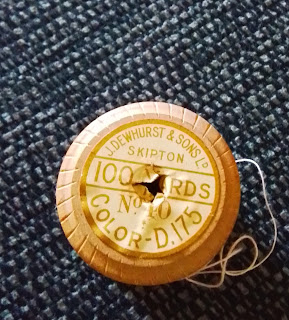A Bad Year
The various firms that combined together as the English Sewing Cotton Company did so as a means of streamlining their operations and making them more resilient against dips in the cotton trade. However, though this was a good idea, it didn't quite come off, especially in a bad year.
In September 1902, a cotton trade newspaper reported that the company had recently reported a £127,006 loss for that year - over £19 million in today's money. In the previous year, there had been a profit of over £16,000. So what had gone wrong?
The reasons given for the loss included a high cost for raw cotton and low selling prices in the home trade - some mills had been on short time. Another issue had been the major acquisition of shares in the American Thread Company, which had failed to pay any dividends. It seems that too many shares in both the new American Thread Company and the ESCC had been given out to sewing company owners in the US, making them worth less than they should be.
The original directors tendered their resignation and a new board had been put forward. The new chairman was to be Thomas C Waterhouse - whom I am yet to find any more information about. Was he a relative of the Waterhouse that designed Manchester Town Hall, I wonder? Maybe not as it seems to have been a common surname in Manchester at the time. The only name on the new board that had any obvious connection with the member companies was Frank Henry Roby (Ermen & Roby). Other names were Herbert Morgan, Joseph Bowker, Charles Diamond, Joseph Palmer and Henry Harrison.
 |
| Image from "Through the Eye of a Needle" available as a pdf download from my Etsy shop, SewSylko. |



Comments
Post a Comment